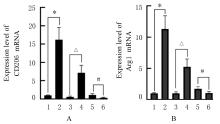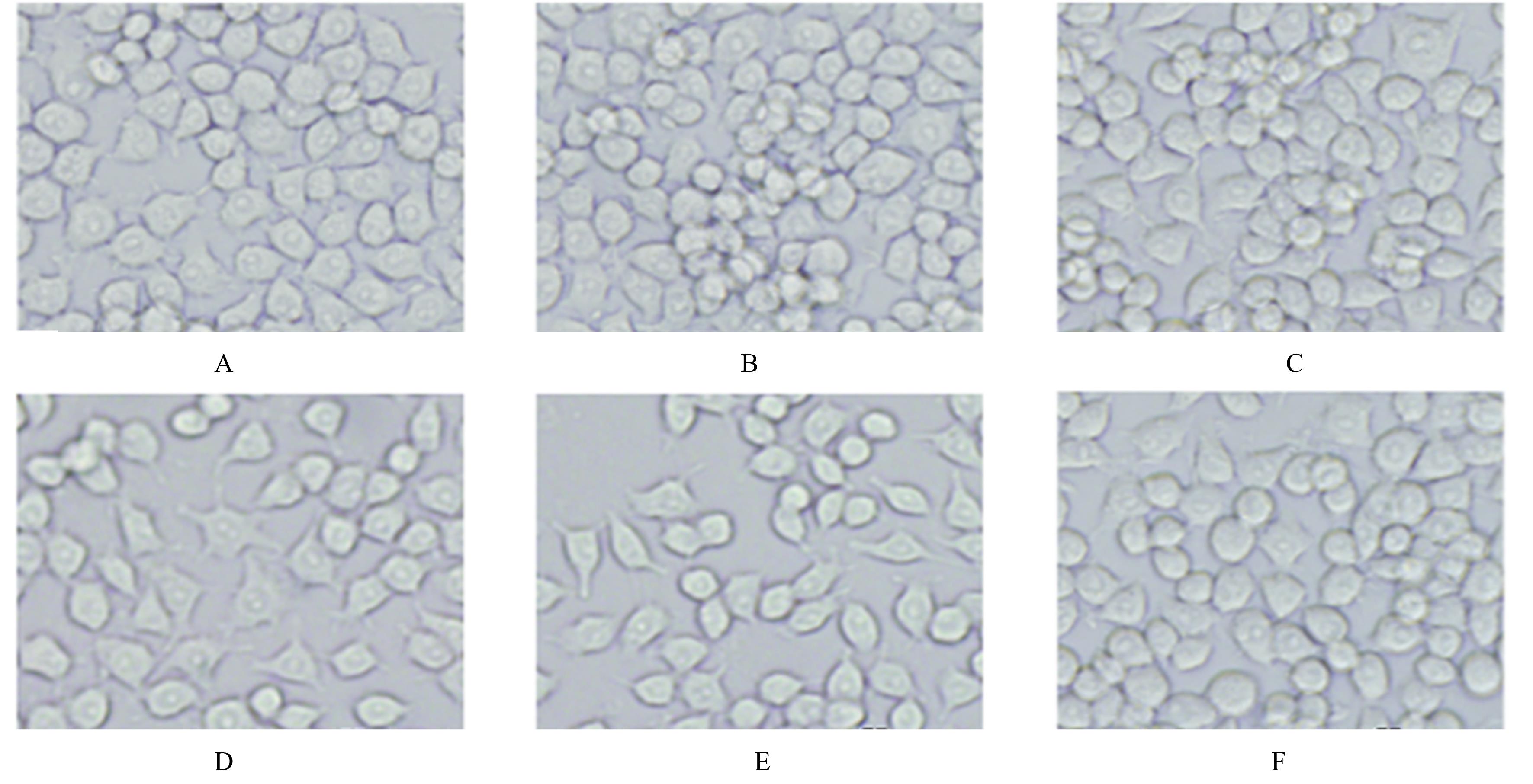| 1 |
MENG F F, YU W H, DUAN W M, et al. Dexmedetomidine attenuates LPS-mediated BV2 microglia cells inflammation via inhibition of glycolysis[J].Fundam Clin Pharmacol,2020,34(3): 313-320.
|
| 2 |
HAAS S A, LANGE T, SAUGEL B, et al. Severe hyperlactatemia, lactate clearance and mortality in unselected critically ill patients[J]. Intensive Care Med, 2016, 42(2): 202-210.
|
| 3 |
漆正堂. 乳酸何去何从: 运动抗肿瘤的作用及其特异性研究[J]. 体育科学, 2020, 40(4): 50-58.
|
| 4 |
SUN S R, LI H, CHEN J H, et al. Lactic acid: no longer an inert and end-product of glycolysis[J]. Physiology (Bethesda), 2017, 32(6): 453-463.
|
| 5 |
帅念念, 周佳秀, 田绍文, 等. 乳酸/HCAR1信号系统的生物学功能研究进展[J]. 临床与病理杂志, 2021, 41(8): 1925-1931.
|
| 6 |
CASTRO M, ANDRADE J, POTENTE M. Endothelial cells don’t waste: endothelial-derived lactate boosts muscle regeneration[J]. Dev Cell, 2020, 54(2): 137-139.
|
| 7 |
SCANDELLA V, KNOBLOCH M. Sensing the environment: extracellular lactate levels control adult neurogenesis[J]. Cell Stem Cell, 2019,25(6): 729-731.
|
| 8 |
ZHANG D, TANG Z Y, HUANG H, et al. Metabolic regulation of gene expression by histone lactylation[J]. Nature, 2019, 574(7779): 575-580.
|
| 9 |
PENG Y, GONG J P, LIU C A, et al. Expression of toll-like receptor 4 and MD-2 gene and protein in Kupffer cells after ischemia-reperfusion in rat liver graft[J]. World J Gastroenterol, 2004, 10(19): 2890-2893.
|
| 10 |
YAMAMOTO M, AKIRA S. TIR domain-containing adaptors regulate TLR signaling pathways[J]. Adv Exp Med Biol, 2005, 560: 1-9.
|
| 11 |
李 杏, 王丹丹, 唐 琪, 等. 巨噬细胞极化的转录调控及其对相关疾病影响的研究进展[J]. 吉林大学学报(医学版), 2016, 42(3): 622-625.
|
| 12 |
HUANG Z L, CHEN M W, WEI M J, et al. Liver inflammatory injury initiated by DAMPs-TLR4-MyD88/TRIF-NFκB signaling pathway is involved in monocrotaline-induced HSOS[J]. Toxicol Sci, 2019, 172(2): 385-397.
|
| 13 |
刘 苗, 李姣姣, 陈江南, 等. 乳酸调节巨噬细胞向M2型极化的作用[J]. 医学分子生物学杂志, 2018, 15(3): 136-139.
|
| 14 |
刘 妍, 陈 翀, 曹峰琦, 等. 肿瘤微环境中乳酸对巨噬细胞表型极化和功能的影响[J]. 基础医学与临床, 2014, 34(6): 740-745.
|
| 15 |
ZHANG J, MURI J, FITZGERALD G, et al. Endothelial lactate controls muscle regeneration from ischemia by inducing M2-like macrophage polarization[J]. Cell Metab, 2020,31(6):1136-1153.e7.
|
| 16 |
SERUGGIA D, MONTOLIU L. The new CRISPR-Cas system: rna-guided genome engineering to efficiently produce any desired genetic alteration in animals[J]. Transgenic Res, 2014, 23(5): 707-716.
|
| 17 |
JOURDAIN P, ROTHENFUSSER K, BEN-ADIBA C,et al. Dual action of L-Lactate on the activity of NR2B-containing NMDA receptors: from potentiation to neuroprotection[J]. Sci Rep, 2018, 8(1): 13472.
|
| 18 |
BALTAZAR F, AFONSO J, COSTA M, et al. Lactate beyond a waste metabolite: metabolic affairs and signaling in malignancy[J]. Front Oncol, 2020, 10: 231.
|
| 19 |
COLEGIO O R, CHU N Q, SZABO A L, et al. Functional polarization of tumour-associated macrophages by tumour-derived lactic acid[J]. Nature, 2014, 513(7519): 559-563.
|
| 20 |
DICHTL S, LINDENTHAL L, ZEITLER L, et al. Lactate and IL6 define separable paths of inflammatory metabolic adaptation[J].Sci Adv,2021,7(26): eabg3505.
|
| 21 |
HUME D A. The many alternative faces of macrophage activation[J]. Front Immunol, 2015, 6: 370.
|
| 22 |
CHIU T W, PENG C J, CHEN M C, et al. Constructing conjugate vaccine against Salmonella Typhimurium using lipid-A free lipopolysaccharide[J]. J Biomed Sci, 2020, 27(1): 89.
|
| 23 |
IGLESIAS-LINARES A, HARTSFIELD J K JR. Cellular and molecular pathways leading to external root resorption[J]. J Dent Res, 2017, 96(2): 145-152.
|
| 24 |
姚 亮, 唐若愚, 尹 岚,等.IL-4抑制骨髓细胞分化产生嗜碱性粒细胞的机制研究[J].同济大学学报(医学版),2021,42(3):291-298.
|
| 25 |
LIU T, ZHANG L Y, JOO D, et al. NF-κB signaling in inflammation[J]. Signal Transduct Target Ther, 2017, 2: 17023.
|
| 26 |
LI J T, ZHANG J, GUO H X, et al. Critical role of alternative M2 skewing in miR-155 deletion-mediated protection of colitis[J]. Front Immunol, 2018, 9: 904.
|
| 27 |
RAZANI B, MALYNN B A, MA A. Preserving immune homeostasis with A20[J]. Adv Immunol, 2020, 148: 1-48.
|
| 28 |
涂文辉,刘 锦, 朱传武. HBV及其相关蛋白泛素化修饰进展[J].临床肝胆病杂志,2021,37(9):2191-2197.
|
| 29 |
ZANG R, LIAN H, ZHONG X, et al. ZCCHC3 modulates TLR3-mediated signaling by promoting recruitment of TRIF to TLR3[J]. J Mol Cell Biol, 2020, 12(4): 251-262.
|
 )
)



















